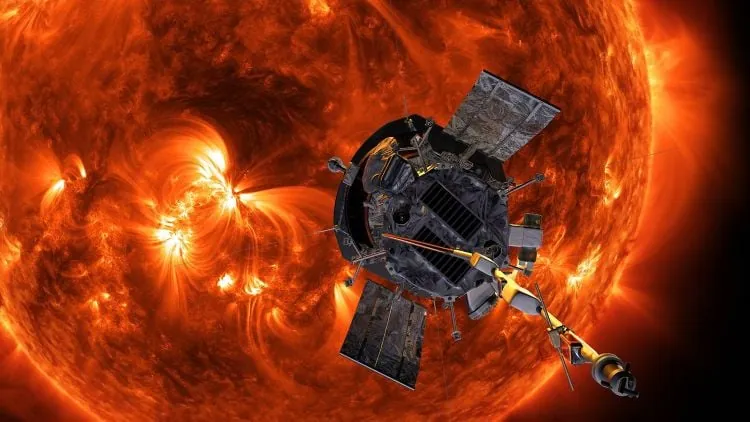
Unlocking the Secrets of the Sun: New Study Reveals the Helicity Barrier
2025-08-30
Author: Daniel
Revolutionary Insights into Solar Phenomena
What fuels the Sun’s energy, solar wind, and scorching heat? A groundbreaking study published in Physical Review X dives deep into this mystery, shining a light on an astonishingly new type of barrier within our Sun. This revelation could fundamentally reshape our understanding not only of our Sun but also of celestial bodies across the universe.
The Role of NASA's Parker Solar Probe
Leveraging data gathered by NASA’s Parker Solar Probe—an unprecedented mission that brings us closer to the Sun than any spacecraft in history—researchers sought to uncover how the Sun transitions energy into heat, a process known as turbulent dissipation. By analyzing critical information about solar magnetic fields, plasma behaviors, and the elusive corona (the Sun's outer atmosphere), the team achieved a significant breakthrough.
Introducing the Helicity Barrier
The scientists unveiled what they identified as the 'helicity barrier,' a long-suspected boundary that describes how small-scale energies impact plasma heating, ultimately modifying solar wind dynamics. This discovery holds the key to answering many persistent questions about coronal heating and the mechanisms behind solar wind acceleration.
Dr. Christopher Chen from Queen Mary University of London, a co-author of the study, emphasized the significance of these findings: "This paper strengthens our grasp of the helicity barrier, clarifying the temperature patterns in the solar atmosphere and explaining the variability in solar wind streams. It enriches our understanding of turbulent dissipation, linking small-scale physics to broader heliospheric properties, enhancing our ability to predict space weather events."
Implications Beyond Our Solar System
The implications of this discovery extend far beyond our own solar system. Understanding how stars convert energy to heat can inform scientists about the formation and evolution of exoplanets—multiplying our chances of finding worlds that might support life. Moreover, the solar wind plays a pivotal role in shaping Earth's magnetic field and phenomena like the polar auroras. However, under strong solar winds, satellites can face dire threats, reminiscent of the catastrophic Carrington Event of 1859.
The Parker Solar Probe's Historic Journey
Since its launch in August 2018, the Parker Solar Probe has rewritten the books on solar physics, achieving record-breaking proximity to the Sun—approximately 6.1 million kilometers (3.8 million miles) away as of December 2024. It is equipped with a white reflective shield that protects its sensitive instruments, enabling unprecedented data collection. Although the mission will eventually conclude when the spacecraft exhausts its fuel, its insights will resonate for millions of years.
What Lies Ahead?
As we look towards the future, the exciting questions remain: what further revelations regarding the Sun’s helicity barrier will researchers unveil in the coming years? One thing is certain—our journey to understand the Sun and its mysteries is far from over. Stay curious and keep looking up!



 Brasil (PT)
Brasil (PT)
 Canada (EN)
Canada (EN)
 Chile (ES)
Chile (ES)
 Česko (CS)
Česko (CS)
 대한민국 (KO)
대한민국 (KO)
 España (ES)
España (ES)
 France (FR)
France (FR)
 Hong Kong (EN)
Hong Kong (EN)
 Italia (IT)
Italia (IT)
 日本 (JA)
日本 (JA)
 Magyarország (HU)
Magyarország (HU)
 Norge (NO)
Norge (NO)
 Polska (PL)
Polska (PL)
 Schweiz (DE)
Schweiz (DE)
 Singapore (EN)
Singapore (EN)
 Sverige (SV)
Sverige (SV)
 Suomi (FI)
Suomi (FI)
 Türkiye (TR)
Türkiye (TR)
 الإمارات العربية المتحدة (AR)
الإمارات العربية المتحدة (AR)